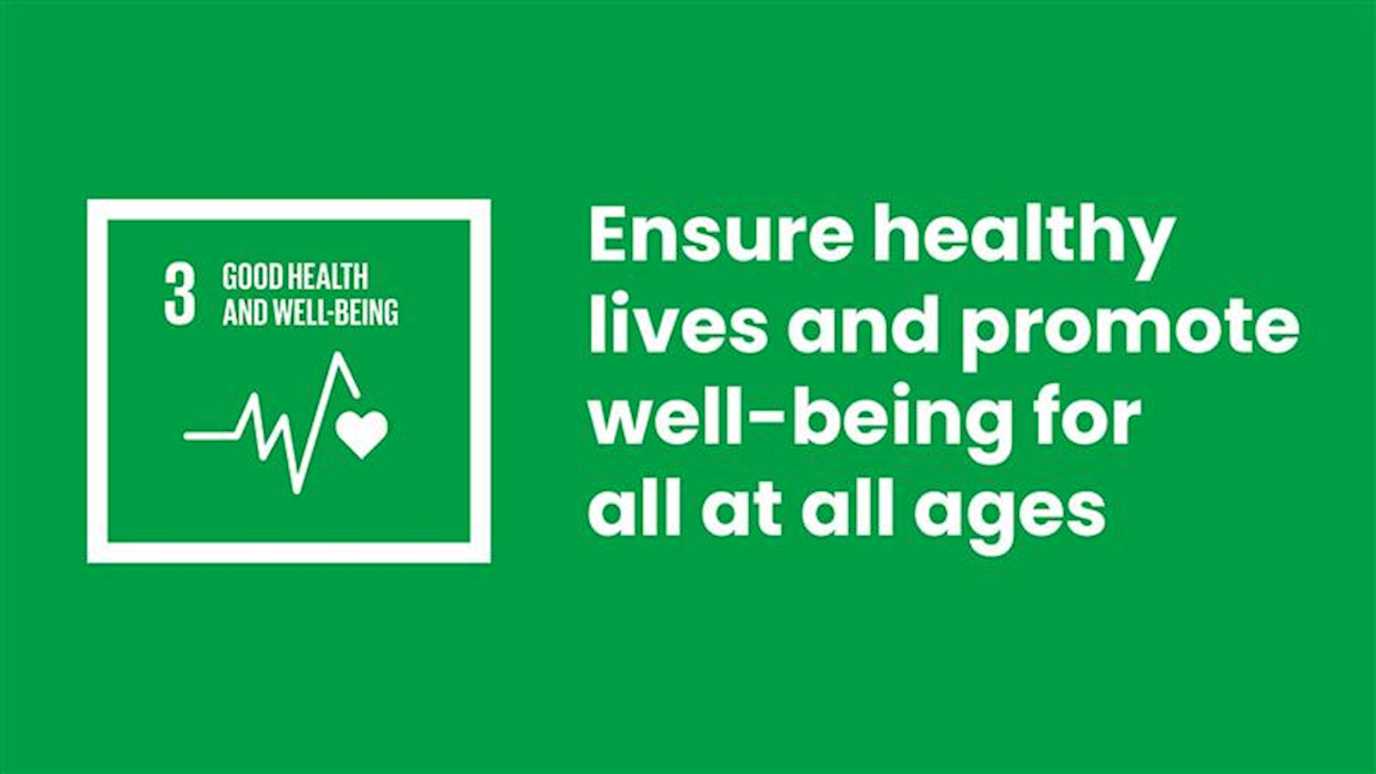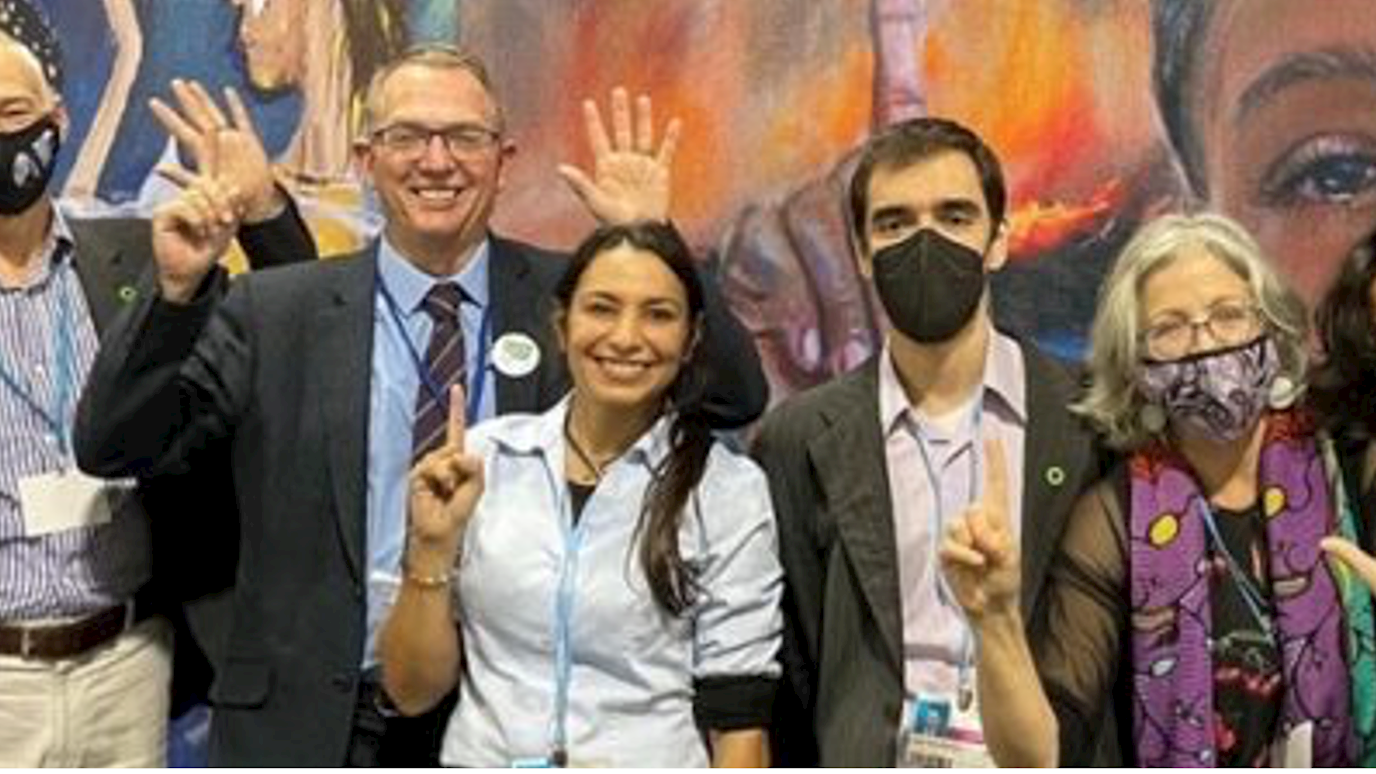United Nations Sustainable Development Goal (SDG) 3 focuses on health and well-being. But ensuring this is equitable and inclusive is a complex challenge, as the inequities of COVID-19 vaccine access show, writes Maureen Ayikoru.

The UN’s SDG 3 retains the health Millennium Development Goals (MDGs) 4, 5 and 6, which have been consolidated into SDG 3. It broadened the scope of the health MDGs to include non-communicable diseases (NCDs), mental health and environmental risks, with associated number of targets and indicators.
A multisectoral approach is required in implementing SDG 3, drawing on stakeholders from public, private, civil society, communities, and individuals. Health needs to ensure equity (fairness of access) for all, so that ‘no one is left behind’. While the focus is on SDG 3, all goals are interlinked to some extent. However, transformative change in health systems is challenging (e.g., inadequate theory of change, challenges associated with financing, and health information systems).
Prior to the COVID-19 pandemic, there were some clear strategic priorities in relation to SDG3. In high-income and some emerging economies, the main priorities coalesced around health and well-being of an aging population and the associated challenges around the cost of pensions and healthcare, as well as the notable epidemiological shift to mainly NCDs, among others. Low-income countries, which often have fragile, under-resourced healthcare systems, mainly concentrated on addressing communicable diseases and associated challenges as well as routine immunisation programmes aimed at improving maternal and child health, and treating HIV/AIDs and hepatitis among others.
The challenges of inclusive health and well-being
Providing inclusive health and well-being for all was always going to be a challenge. Political economy often influences the availability and allocation of resources needed, adding constraints to fair access and ‘leaving no one behind’. In low-income countries, the World Health Organisation (WHO) estimates released in 2009 noted an additional necessary expenditure of $29 per person for the health systems to meet the needs of the population, with latest estimates reaching just under $60. It requires economies to grow faster than they have managed to do in the recent decade while addressing challenges around poverty, educational attainments, sanitation, gainful employment, and gender equality.
Richer countries which are generally better resourced, to the extent of having some of the best healthcare systems in the world, manifest identifiable gaps in ensuring universal access to health and well-being. Add to this the presence of non-citizens, mostly migrants or the undocumented as well as refugees, whose access to health and well-being never ceases to attract extreme and politicised sentiments of either support or negation. The cost of financing an equitable and inclusive health and well-being is a less well-thought-out issue within SDG 3.
Added complexities from the COVID-19 pandemic
The COVID-19 pandemic has added further complexities to already complex healthcare systems that were starting to report good early progress in some aspects. The pandemic revealed systemic vulnerability of healthcare systems, given the excessive mortality rates, reduction in utilisation of routine care services, severe disruptions to livelihoods. The pandemic laid bare pre-existing vulnerabilities in the healthcare apparatus, leading to highly visible inequalities. These inequalities and the associated impacts (some examples here, here, here, here and here) were noticeably linked to specific socio-demographic characteristics.
The frantic search for vaccines presented the only hope for alleviating the extreme suffering and the disruptions around the world. Richer countries were able to invest in vaccines and a few options became available by the end of 2020. The discovery of vaccines took on new dimensions when nationalism and hoarding made itself manifest. Under normal circumstances, adopting such strategies might make some sense. But the WHO noted, ‘no one is safe unless everyone is’. Behind the scenes, alternative arrangements were made to ensure vaccines would be produced and made available to poorer countries that stood no chance of obtaining them under the current political and supply chain constraints. This is how COVAX, which is part of a global collaborative project, aimed at facilitating speedy manufacturing as well as ensuring an equitable access to both rich and poor countries, was founded. Recent accounts, summarised in the graph below, indicate that a little over 47 per cent of the world population has received at least one dose of COVID-19 vaccine while less than 3 per cent of people in low-income countries have been similarly vaccinated.
Graph shows share of people vaccinated against COVID-19, 11 October 2021. Source: Our World in Data.
The graph above shows the limits to a universalised agenda for health and well-being, particularly in the context of poorer countries for which SDG 3b had promised to make vaccines and essential medicines accessible on sustainable basis. Notwithstanding the COVAX facility, which promised to ensure at least 20 per cent of their populations would be vaccinated by end of 2022, less than 3 per cent have received the vaccines. A myriad of constraints have contributed to the notable differences in vaccination rates across poorer nations.
Research on vaccine hesitancy
The WHO continues to reiterate the significance of a globally equitable access to a vaccine and the protection of healthcare workers as well as those most-at-risk as the only way to mitigate against the impacts of COVID-19. Equitable access to a COVID-19 vaccine does not necessarily mean everyone is willing to accept it. Vaccine hesitancy, which entails delaying or even refusing to be inoculated, remains an important issue across countries, both rich and poor (some views on this from here, here and here).
In my own research recently conducted in Uganda among healthcare professionals and work done by colleagues in the UK and Armenia, it seems that there is no singular perspective when it comes to vaccine hesitancy. Instead, a broad spectrum highlighting a range of attitudes that fall along a continuum can be identified, with some people simply showing apathy due to perceptions of low levels of risk from COVID-19, through those who might initially be hesitant but eventually change their minds should other factors (peers, community, scientific or religious authorities) indicate this to be the most reasonable course of action. Equitable access and vaccine hesitancy will be the two main barriers that will determine the extent to which the ongoing pandemic and its dreadful impacts on society are mitigated.
SDG 3 represents an ambitious global vision for health and well-being with room for countries to contextualise according to their own strategic priorities. The COVID-19 pandemic revealed and exacerbated under-acknowledged systemic challenges in healthcare systems around the world. To ‘leave no one behind’ and to ‘build back a better’ is a first order challenge.
Maureen Ayikoru is a lecturer in Sustainability and Business Ethics in the School of Business and Management at Royal Holloway. Her research focuses on sustainability of health systems, responsible management of businesses and other organisations. She also researches on the role of social innovation and institutions in socio-economic development and in addressing structural inequalities, mainly in Sub-Saharan Africa.
























